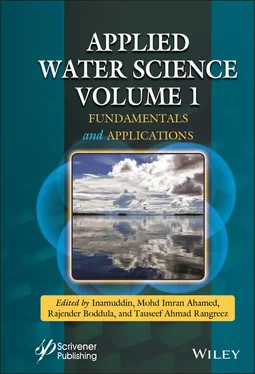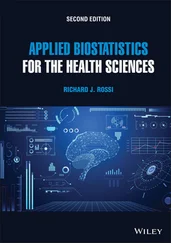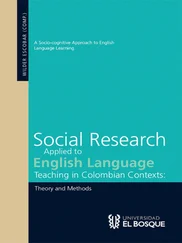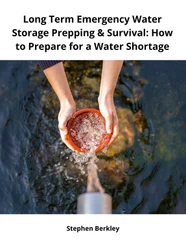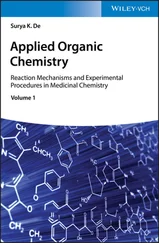In aquatic systems and even in the human body, pharmaceuticals are modified by environmental stressors which subsequently change the exposure scenario (Oskarsson et al., 2014). Although individual pharmaceuticals are used in very small quantities (therapeutic dose), the presence of several similar pharmaceuticals (sharing same mode of action) may cause additive or synergistic exposures, and diversified stressor-receptor effects to non-target species (Daughton and Ternes, 1999). However as shown in Table 2.1, most studies on human health risks were conducted in developed countries (Shulman et al., 2002; Nimmen et al., 2006; Tomasi et al., 2016; Kibuye et al., 2019; Brown et al., 2019). This occurs despite the fact that the presence of pharmaceuticals in the environment is of global concern irrespective of level of industrialization (Kurster and Adler, 2014).
Research attention on human health risks should focus on Africa due to several risk factors (Gwenzi and Chaukura), including (1) reliance on untreated drinking water, (2) high levels of aquatic pollution caused by weak and poorly enforced regulations, and (3) lack of environmental and human health surveillance data. Human health risk assessment can be used to address, and minimize the potential human health risks highlighted in this chapter particularly in developing countries. The potential human health risks to guide research on human health effects associated with exposure to pharmaceuticals in the environment are shown in Table 2.1. Literature shows that the fate and behaviour of most pharmaceuticals entering the environment via numerous pathways remain poorly characterized (Kaczala and Blum, 2016). Further, the interactions of pharmaceuticals in various environmental media result in complex mixtures to which humans are exposed, not similar to actual doses as from on-the-counter prescriptions. This may imply that HRAs should also focus on mixtures of pharmaceuticals (Fent et al., 2006; Daughton, 2016). Data to allow metabolites and transformation products to be incorporated into human health risk assessments still lacking (Kummerer, 2010). Thus, the human health risks of pharmaceutical in the environment including aquatic systems require further investigation.
2.3.3 Human Health Risks: A Developing World Perspective
The potential human health risks could be higher in developing countries including those in Africa than in developed countries due to several risk factors. These risk factors are discussed in earlier reviews focusing on organic and emerging contaminants (Gwenzi and Chaukura, 2018; Gwenzi et al., 2019). These risk factors are underpinned by weak and poorly enforced regulations on environment, public health and medicines control prevalent in developing countries. Consequently, there is a thriving informal or black market for pharmaceuticals, including those long banned in developed countries, a scenario that promotes misuse and abuse of pharmaceuticals (Schwarzenbach et al., 2006).
The food safety and hygiene standards tend to be poor. Thus, the consumption of untreated drinking water and aquatic foods obtained from polluted aquatic systems is prevalent (Gwenzi and Chaukura, 2018). Even in cases where drinking water is treated, the capacity of conventional low-cost methods (e.g., biosand filtration, chlorination, solar disinfection, and boiling) to remove dissolved contaminants such as pharmaceuticals could be low (Gwenzi et al., 2017). In the case of chlorination, formation of carcinogenic disinfection by-products formed when chlorine reacts with organic materials may even increase the human health risks (Sorensen et al., 2015).
Poor solid waste and wastewater management practices, including direct discharge of raw wastewater promotes the contamination of aquatic systems with pharmaceuticals (Gwenzi and Chaukura, 2018). Moreover, the overuse and misuse of pharmaceuticals driven by the high burden of livestock and human diseases in tropical environments in developing countries could lead to increased release of pharmaceuticals into aquatic systems (Badejo, 2000). Yet, environmental and public health systems and health risk assessment of pharmaceuticals are non-existent in most developing countries. Taken together, the human health risks could be significant in these developing countries, highlighting the need for caution when extrapolating findings on human health risks based on evidence from developed countries. Thus, comprehensive research on human health risks, including toxicological and epidemiological studies are needed in developing countries especially those in Africa.
2.3.4 Removal of Pharmaceuticals
Most pharmaceuticals persist in the environment, thus improved removal methods are required to remove them from aquatic systems (Patel et al., 2019). The methods used for the removal of pharmaceuticals include biological, chemical, physical, and thermal methods. While physical methods include adsorption, electrodialysis, evaporation, filtration, flocculation, RO, and sedimentation, chemical methods encompass calcination, ion-exchange, precipitation, and reduction. Pyrolysis and incineration are thermal treatments. The most widely used biological techniques are activated sludge, anaerobic digestion, slow sand filters, and waste stabilization ponds (Chen et al., 2015). Whereas physical approaches transfer pharmaceutical compounds from the aqueous to the solid phase, biological and chemical methods chemically react the pharmaceuticals to generate new decomposition products, with the possibility of complete mineralization.
2.3.4.1 Conventional Removal Methods
Pharmaceuticals in drinking water are linked to their presence in raw water (Wang et al., 2019). The conventional drinking water treatment train has unit operations which include coagulation/flocculation, clarification, filtration, and disinfection (Zhang et al., 2017). These may be further complemented by advanced methods like activated carbon, membrane filtration, ozonation, or advanced oxidation processes. The conventional drinking water treatment process is incapable of efficiently removing pharmaceutical compounds from source water (Cunha et al., 2019). Nonetheless, limited removals could occur during the disinfection stage, which commonly uses chlorine, chlorine dioxide, and ozone (Patel et al., 2019; Wu et al., 2019). During clarification, chemicals are added to the source water to destabilize and flocculate colloidal particles, and facilitate settling together with suspended solids and sediments. For instance, ferric chloride causes hydrolysis of hydrophilic pharmaceutical compounds such as acetaminophen, dehydronifedipine and sulfamethoxazole, resulting in their removal, albeit at low percentage. The effectiveness of coagulation/flocculation is pH and dosage dependent (Ramavandi, 2014). Solution pH affects the availability of OCl -and HOCl, and this consequently affects the oxidation process. The disinfection stage has been reported to remove up to 75% of acetaminophen, erythromycin, and sulfamethoxazole (Patel et al., 2019). Chlorine dioxide oxidizes and removes pharmaceutical compounds more effectively than chlorine. Nonetheless, some pharmaceuticals are significantly reduced by ozone. Despite its capacity to degrade a variety of pharmaceutical compounds, chlorination is limited to aqueous systems which are less polluted to avoid elevated concentrations of ammonia and dissolved organic carbon. Moreover, the mineralization due to chlorination is insignificant, and it potentially produces a variety of disinfection byproducts, which are carcinogenic to humans (Zhang et al., 2017; Tian et al., 2019).
Читать дальше
